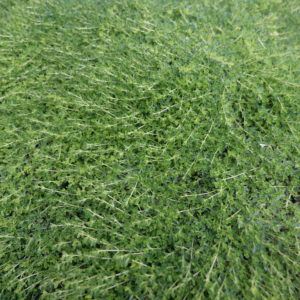


Fruit: Display/Harvest Time: Fall Fruit Type: Schizocarp Fruit Length:
#Thyme ground cover plugs full#
Cultural Conditions: Light: Full sun (6 or more hours of direct sunlight a day) Soil Texture: Loam (Silt) Sand Shallow Rocky Soil pH: Alkaline (>8.0) Neutral (6.0-8.0) Soil Drainage: Good Drainage Occasionally Dry Very Dry Available Space To Plant: 12 inches-3 feet USDA Plant Hardiness Zone: 4a, 4b, 5a, 5b, 6a, 6b, 7a, 7b, 8a, 8b, 9a, 9b.Whole Plant Traits: Plant Type: Ground Cover Herbaceous Perennial Perennial Shrub Woody Plant Leaf Characteristics: Semi-evergreen Habit/Form: Creeping Dense Spreading Growth Rate: Rapid Maintenance: Low Texture: Fine.Play Value: Attractive Flowers Attracts Pollinators Fragrance Particularly Resistant To (Insects/Diseases/Other Problems): Deer, rabbits, drought, air pollution, salt, and dry soil Edibility: This plant is primarily ornamental and is rarely used in cooking. Attributes: Genus: Thymus Species: serpyllum Family: Lamiaceae Life Cycle: Perennial Woody Recommended Propagation Strategy: Seed Country Or Region Of Origin: Northern Europe, Western Asia, and Northern Africa Distribution: Native: Austria, Baltic States, Belarus, Belgium, Buryatiya, Central European Russia, Czechoslovakia, Denmark, East European Russia, Finland, France, Germany, Great Britain, Hungary, Netherlands, North European Russia, Northwest European Russia, Norway, Poland, Sweden, Ukraine, West Siberia Wildlife Value: Host plant to the common blue butterfly and the large blue butterfly.Tags: #evergreen #showy flowers #small spaces #drought tolerant #low growing #fragrant leaves #salt tolerant #low maintenance #cottage garden #rabbit resistant #air pollution tolerant #stream banks #cpp #deer resistant #woody groundcover #groundcover #rock garden #stepping stones #subshrub #poor soils tolerant #sensory garden #patio planting #dry soils tolerant #woody perennial 'Coccineus', 'Elfin', 'Magic Carpet', 'Pink Chintz' Wooly dark green leaves, salmon pink flowers See this plant in the following landscape: Backyard Patio Cultivars / Varieties:ĭark green leaves and reddish-pink flowers Spider mites may occur during a hot, dry summer. The plant is susceptible to rot if overwatered or if the soil is poorly drained. Insects, Diseases, and Other Plant Problems: There are no serious insect or disease problems. Creeping, prostrate, woody base which grows up to 3 inches tall and 12 inches wide.Tiny deep pink to purple tubular-shaped flowers occur along a raceme.Elliptical, round-tipped leaves are 1/4 inches long, pubescent, and fragrant.The leaf colors of the cultivars vary from dark green, gold, or variegated. The cultivar's flowers range from white, pink, red, or purple. There are numerous cultivars with varying sizes and may be either creeping or upright. Bees and butterflies are attracted to the nectar of the flowers and the plant is deer and rabbit resistant. The plant will fill in crevices of stepping stones or sprawl over rocks. It provides groundcover for borders, patios, and pathways. The stems are thin and woody. Creeping thyme is low maintenance, but it does require pruning to manage growth and decrease woody stems The most common method of propagation is by seed.Ĭreeping Thyme would make a wonderful addition to a home garden. The leaves are tiny, pubescent, and blue-green in color. The blooms appear on the upright stems from June to September. The flowers are tiny tubular bell-shaped blooms that are deep pink to purple. It will remain evergreen during mild winters. It is drought tolerant and prefers average to dry medium moisture. It prefers full sun and tolerates poor soil while thriving in sandy, gritty, or rocky soil. The plant is hairy, prostrate, and creeping. The species name serpyllum is Greek and means "creeping or trailing growth habit." The word "thyme" may also be derived from the Greek word thymos, meaning "perfume." The plant is fragrant and aromatic. The origin of the word "thyme" is from the Greek word thumos, which means "courage." During the Medieval Times, thyme was thought to have been an emblem of bravery. It measures 2-3 inches tall and 3 to 12 inches wide.Ĭreeping Thyme is native of Northern Europe, Western Asia, and Northern Africa. The plant's leaves are aromatic, but it is not typically used in cooking. It is grown primarily as an ornamental groundcover. Phonetic Spelling THY-mus ser-PIE-lum DescriptionĬreeping thyme is a dwarf, low-growing, creeping, woody evergreen.


 0 kommentar(er)
0 kommentar(er)
